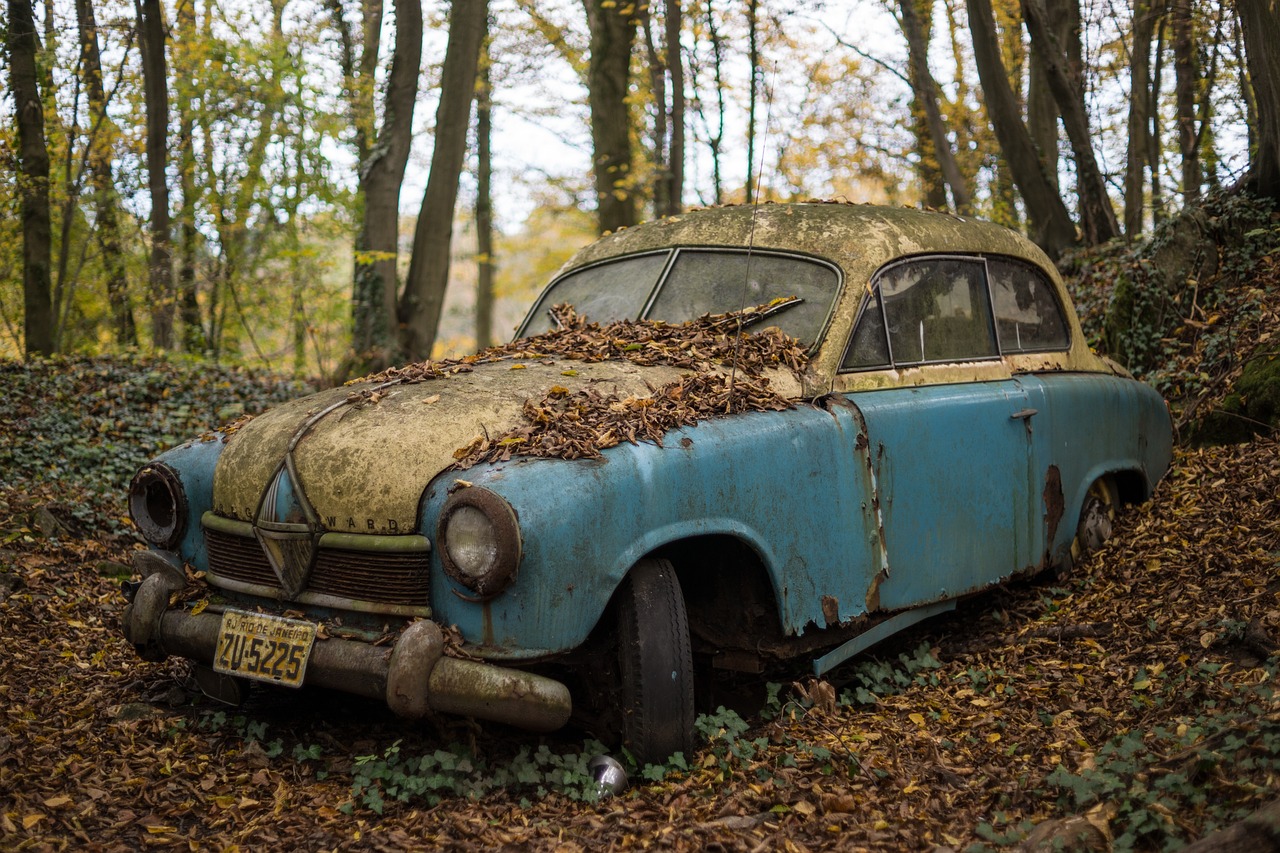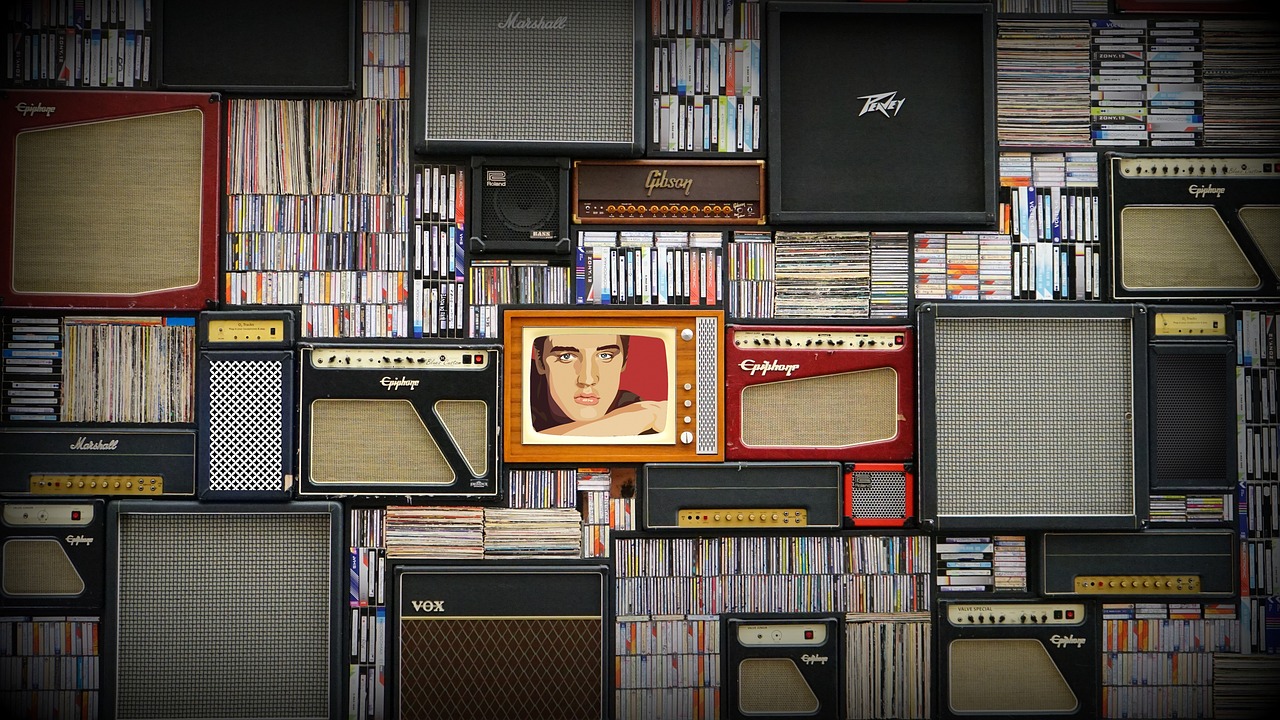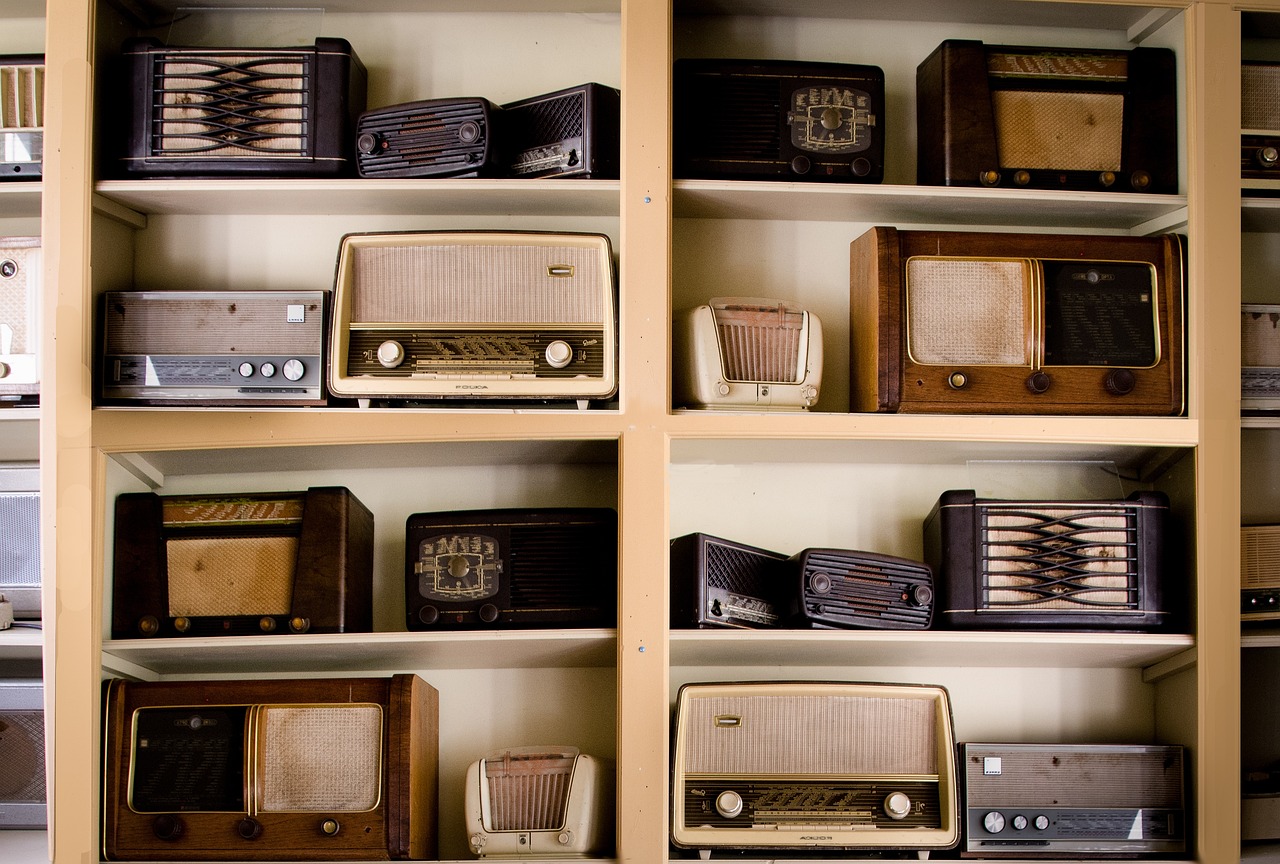Reliving the Magic: Iconic Shows That Defined Our Living Rooms

Step back in time and immerse yourself in the golden age of television, a period when living rooms were filled with laughter, drama, and unforgettable characters. The 1950s and 1960s birthed a plethora of iconic shows that not only entertained but also shaped the culture of their time. Let’s explore these magical moments together!
Iconic Shows That Captivated Audiences
- I Love Lucy
Airdate: October 15, 1951 – May 6, 1957Lucille Ball’s comedic genius brought us Lucy Ricardo, who constantly found herself in hilarious predicaments. The show broke ground with its portrayal of a mixed-race couple and still resonates with audiences today.
- The Ed Sullivan Show
Airdate: June 20, 1948 – June 6, 1971This variety show introduced America to iconic performances, including The Beatles and Elvis Presley. Viewers gathered around their TVs to witness history being made, making it a staple of American entertainment.
- Leave It to Beaver
Airdate: October 4, 1957 – July 20, 1963This family-centered sitcom depicted the wholesome lives of the Cleaver family, showcasing the innocence of childhood and the values of the 1950s. Its charm continues to resonate with those who remember it fondly.
- The Twilight Zone
Airdate: October 2, 1959 – June 19, 1964Rod Serling’s anthology series blended science fiction, fantasy, and horror, challenging viewers’ perceptions of reality and morality. Each episode left audiences pondering the complexities of the human experience.
- Star Trek
Airdate: September 8, 1966 – June 3, 1969Boldly going where no one had gone before, this groundbreaking series envisioned a future of peace and diversity, inspiring generations of fans to dream of the stars. Its legacy lives on in numerous sequels and spin-offs.
Impact on Society and Culture
These shows weren’t just entertainment; they reflected and influenced societal norms and values. They addressed issues such as race, gender roles, and family dynamics, often challenging the status quo. How did these shows make you feel? Which one holds a special place in your heart?
Interactive Section: Share Your Memories
Now it’s your turn! Let’s reminisce together. Fill in the table below with your favorite show and a cherished memory associated with it.
| Your Favorite Show | Memory |
|---|---|
| Example: I Love Lucy | Watching it with my family every Thursday night. |
As we look back on this nostalgic journey, it’s clear that the shows of the 1950s and 1960s created lasting memories and connections. They remind us of simpler times and the joy of gathering around the television. What will you remember most about this era?
Behind the Scenes: The Unsung Heroes of 1950s and 1960s Television

During the 1950s and 1960s, television blossomed into a powerful cultural force, captivating audiences with its innovative storytelling and memorable characters. While stars like Lucille Ball and Johnny Carson dazzled viewers from their screens, countless unsung heroes worked tirelessly behind the scenes to bring these iconic shows to life. Let’s take a nostalgic journey through the hidden world of television production during this golden era.
The Writers: Crafting Timeless Scripts
Writers were the architects of television narratives. They spun tales that resonated deeply with the audience, often reflecting societal values and challenges of the time. Shows like I Love Lucy and The Honeymooners were products of brilliant writing that showcased humor and humanity.
The Directors: Visionaries Behind the Camera
Directors played a pivotal role in shaping the visual storytelling of television. They translated scripts into engaging performances, guiding actors with precision. Directors like William Asher, known for his work on Bewitched, infused shows with unique styles that became hallmarks of the era.
The Set Designers: Creating Iconic Spaces
Every beloved show had a distinctive look, thanks to skilled set designers. They crafted the environments that made stories believable and relatable. For instance, the living room of The Brady Bunch became an iconic symbol of family life during its run.
The Costume Designers: Fashioning Characters
Costumes are essential in establishing a character’s personality. Costume designers worked diligently to create outfits that not only reflected the characters but also the fashion trends of the time. Think of the iconic polka dots that defined Lucy Ricardo’s style!
The Crew: The Heart of Production
Behind every successful television show is a dedicated crew. From camera operators to sound engineers, these individuals ensured that everything ran smoothly. Their hard work often went unnoticed, yet it was crucial for the seamless execution of each episode.
What are your favorite TV memories from the 1950s and 1960s? Reflect on the shows that made you laugh, cry, or think. Was it the clever writing, the unforgettable characters, or the incredible production values that stayed with you? Share your thoughts!
The golden era of television was not just about the stars in front of the camera; it was a collaborative effort of many talented individuals working behind the scenes. Their contributions shaped the television landscape we cherish today. As we reminisce about the beloved shows of yesteryear, let’s remember and celebrate these unsung heroes who made it all possible.
A Time of Innovation: How Technology Shaped Classic TV

The 1950s and 1960s marked a pivotal period in television history, often regarded as the Golden Era of Television. During this time, technological advancements transformed not only how shows were produced but also how audiences experienced them. Let’s take a nostalgic journey through the innovations that defined classic TV.
1. The Birth of Color Television
Before the 1950s, television was primarily in black and white. The introduction of color television was revolutionary and changed the viewing experience forever.
- Technicolor: This technology allowed for vibrant colors to be displayed, captivating audiences and making shows more engaging.
- Impact on Programming: Popular shows like Bonanza and The Ed Sullivan Show utilized color, attracting larger audiences and enhancing storytelling.
2. The Rise of the Television Studio
Television studios became the heart of production during this era. Their design and technology played a critical role in shaping the shows.
- Multi-Camera Setup: This technique allowed directors to film multiple angles simultaneously, leading to a more dynamic viewing experience.
- Live Audiences: Many shows were filmed in front of live audiences, creating a unique atmosphere and energy that could be felt by viewers at home.
3. Innovations in Sound and Audio
Sound technology also saw significant advancements that enhanced the overall quality of television programming.
- Improved Microphones: The use of high-quality microphones allowed for clearer dialogue and sound effects, making shows more immersive.
- Soundtracks: Original scores and theme music became integral, with composers like Henry Mancini making a mark in the industry.
4. The Transition to Remote Control
The invention of the remote control in the 1950s revolutionized how viewers interacted with their televisions.
- Convenience: No longer did viewers have to get up to change the channel; they could do so from the comfort of their couch.
- Impact on Viewing Habits: This new convenience changed the way people engaged with their favorite shows, allowing for more spontaneous viewing.
5. The Influence of Advertising and Sponsorship
Television became a major advertising medium during the Golden Era, influencing both content and technology.
- Sponsored Programs: Shows like The Kraft Television Theatre were directly sponsored by brands, leading to innovative programming formats.
- Commercial Breaks: The introduction of commercial breaks changed the pacing of shows, allowing for strategic ad placements that supported production costs.
Conclusion: A Lasting Legacy
As we reflect on the innovations of the 1950s and 1960s, it is clear that technology played a crucial role in shaping classic television. The advancements made during this time not only enhanced the viewing experience but also laid the groundwork for future developments in the television industry.
What were your favorite shows from this era? How did technology enhance your viewing experience? Share your memories!
Memorable Characters: The Stars Who Stole Our Hearts
As we take a stroll down memory lane, let’s reminisce about those unforgettable characters that graced our television screens during the 1950s and 1960s. These stars not only entertained us but also became a part of our daily lives, shaping the culture of the time.
Beloved Sitcom Characters
Who could forget the laughter and joy brought by sitcoms? Here are some of the most memorable characters:
- I Love Lucy – Lucille Ball as Lucy Ricardo
- The Honeymooners – Jackie Gleason as Ralph Kramden
- Bewitched – Elizabeth Montgomery as Samantha Stephens
Iconic Dramatic Figures
Drama series introduced us to complex characters that tugged at our heartstrings:
- East Side/West Side – George C. Scott as Neil Brock
- Route 66 – Martin Milner as Tod Stiles
- The Fugitive – David Janssen as Dr. Richard Kimble
Animated Stars That Captivated Us
The 1950s and 1960s also brought animated characters that became household names:
- The Flintstones – Fred Flintstone and Wilma Flintstone
- Tom and Jerry – Tom and Jerry
- Yogi Bear – Yogi and Boo Boo
Engaging with Our Favorites
Let’s share some of our favorite memories about these characters. What made them special to you? Was it their humor, their adventures, or maybe their catchphrases? Here’s a little table to jog your memory:
| Character | Show | Favorite Moment |
|---|---|---|
| Lucy Ricardo | I Love Lucy | When she stomped grapes in Italy! |
| Ralph Kramden | The Honeymooners | “One of these days, Alice…” |
| Samantha Stephens | Bewitched | When she twitched her nose! |
These characters not only entertained us but also left a lasting impact on our hearts. They remind us of simpler times, filled with laughter and joy. Take a moment to reflect on your favorite characters from this golden era and share your stories with loved ones!
Cultural Reflections: How TV Mirrored Society in the ’50s and ’60s
Television in the 1950s and 1960s was not just a source of entertainment; it was a powerful medium that reflected the changing cultural landscape of America. The shows of this era often depicted the values, challenges, and aspirations of society, providing a lens through which audiences could view their own lives.
Family Dynamics: One of the most significant aspects of television during this time was its portrayal of family life. Sitcoms like Leave It to Beaver and The Dick Van Dyke Show presented an idealized version of family dynamics, where traditional roles were often reinforced. These shows illustrated the American dream, showcasing a nuclear family living in suburban bliss, which resonated with viewers who sought stability in a rapidly changing world.
| Show Title | Year Debuted | Family Representation |
|---|---|---|
| Leave It to Beaver | 1957 | Traditional nuclear family |
| The Dick Van Dyke Show | 1961 | Working couple with humor |
| Bewitched | 1964 | Subverting traditional roles |
Social Issues: Television also began to tackle more serious social issues. Programs like All in the Family broke new ground by addressing topics such as racism, feminism, and class struggles. The character of Archie Bunker became a cultural icon, representing the prejudices of the time while also encouraging discussions about change and acceptance.
Changing Gender Roles: As women began to enter the workforce in greater numbers, television reflected this shift. Shows like The Mary Tyler Moore Show featured strong, independent women who defied traditional expectations, paving the way for future generations. This change in representation helped women feel empowered and challenged societal norms.
Influence of Technology: The rise of color television in the 1960s transformed the viewing experience and the way stories were told. Color brought vibrancy to programs like Star Trek, which not only entertained but also inspired viewers to imagine a future where diversity and equality were part of the human experience.
Audience Interaction: Television also created a sense of community. Families would gather around the TV, sharing their laughter and tears. The interactive nature of live broadcasts and variety shows encouraged audience participation, making viewers feel connected to the performers and each other. How did you and your family experience this era of television?
In conclusion, television in the 1950s and 1960s served as a mirror to society, reflecting its values, struggles, and transformations. It shaped cultural narratives and provided a platform for dialogue, making it an integral part of American life during this golden era. What were your favorite shows from this time, and how do you think they reflected the world around you?
The Golden Age of Sitcoms: Laughter That Brought Us Together
Imagine gathering around the television set with your family after a long day, the warm glow of the screen illuminating your living room. This was the essence of the 1950s and 1960s sitcoms—a time when laughter echoed through households, and beloved characters became part of the family.
During this golden age, shows like ‘I Love Lucy’, ‘The Dick Van Dyke Show’, and ‘The Andy Griffith Show’ not only entertained but also reflected the values and struggles of everyday life. Each episode was a delightful escape, filled with humor that resonated with audiences of all ages.
Relatable Characters and Scenarios
These sitcoms introduced us to unforgettable characters. Lucy RicardoRob and Laura Petrie, who navigated marriage and parenthood with humor, made us laugh, cry, and reflect on our own lives. Their situations were relatable—who hasn’t faced the chaos of family life or the challenges of work?
Community and Connection
What made these sitcoms truly special was their ability to foster a sense of community. Families would come together, sharing laughter over the same jokes and plots. This shared experience created bonds that extended beyond the screen, making every punchline a collective memory.
The Impact of Humor
In a world that was often tumultuous, sitcoms offered a respite. The humor was not just about laughter; it was a way to cope with societal changes, economic struggles, and cultural shifts. Shows like ‘The Beverly Hillbillies’ and ‘Bewitched’ pushed boundaries while keeping audiences entertained.
Trivia and Fun Facts
Did you know that ‘I Love Lucy’ was the first sitcom to feature a pregnant woman? Or that Lucille Ball and Desi Arnaz were the first couple to share a bed on screen? These groundbreaking moments not only shaped television but also opened doors for future storytelling.
Conclusion: A Legacy of Laughter
As we look back on this golden era, it’s essential to remember the joy that these sitcoms brought into our lives. They remind us of the power of laughter and its ability to bring people together, even during challenging times. So, let’s cherish those memories and continue to share the laughter that connected us all.
Dramatic Moments: The Television Episodes That Made Us Feel
Introduction to Dramatic Television
During the 1950s and 1960s, television emerged as a powerful medium that captivated audiences with its storytelling. This era was marked by memorable episodes that evoked strong emotions, leaving a lasting impact on viewers. Let’s take a nostalgic journey through some of the most dramatic moments in television history.
Iconic Episodes That Defined a Generation
Do you remember those nights when the whole family gathered around the television? Here are a few episodes that stirred our emotions:
“The Twilight Zone: Time Enough at Last” – This episode tells the story of a man who longs for solitude and finds himself in a world where he is the last person alive. The dramatic twist evokes feelings of loneliness and despair.
“I Love Lucy: Lucy Does a TV Commercial” – In this classic episode, Lucy’s comedic attempts to promote a product lead to chaotic and hilarious situations, reminding us of the joy and laughter that television can bring.
“The Fugitive: The Judgment” – The final episode of this beloved series brought viewers to the edge of their seats, as Richard Kimble confronts the truth about his wife’s murder. It showcases the struggle for justice and the emotional weight of the truth.
Emotional Connections and Lasting Memories
Can you recall where you were when you watched these episodes? The drama unfolded not just on screen but also in our hearts. Television allowed us to connect with characters and their stories, making us feel:
Joy – The laughter from comedies, which brought families together.
Sadness – Heartbreaking moments in dramas that made us reflect on our own lives.
Suspense – Thrillers that kept us guessing and on the edge of our seats.
The Impact of Dramatic Storytelling
Dramatic television in the 1950s and 1960s shaped our cultural landscape. These stories tackled important social issues, allowing us to explore complex themes such as love, loss, and morality. They encouraged conversations at home, and many of us still reminisce about those discussions today.
As we reflect on these iconic episodes, we realize that the golden era of television was not just about entertainment. It was a time that ignited our emotions and forged connections. Which episodes left a mark on your heart? Share your memories and let’s celebrate the dramatic moments that shaped our viewing experience.
Family Viewing: How TV Bonds Generations
Introduction to Family Viewing
The 1950s and 1960s marked a pivotal period in television history, not just for the shows that captivated audiences, but for the way families gathered around the television set. This shared experience created bonds that transcended generations. Let’s explore how the magic of television fostered familial connections.
Gathering Around the TV
In many households, the television became the focal point of family life. Imagine a living room on a Friday night:
Family members settling in with their favorite snacks.
Children eagerly awaiting the latest episode of their beloved cartoon.
Parents sharing a laugh at the antics of a sitcom character.
Iconic Shows That Brought Us Together
Numerous shows from this era became staples of family viewing:
| Show Title | Year | Type |
|---|---|---|
| The Ed Sullivan Show | 1948-1971 | Variety |
| I Love Lucy | 1951-1957 | Comedy |
| The Andy Griffith Show | 1960-1968 | Comedy |
| Bewitched | 1964-1972 | Fantasy/Comedy |
Each of these programs sparked discussions and laughter, creating lasting memories.
Creating Lasting Memories
Family viewing wasn’t just about the shows; it was about what happened during and after the episodes:
Telling stories about childhood experiences prompted by the plot.
Sharing opinions on the characters’ decisions.
Debating who was the funniest in a comedy show.
Influence on Family Bonding
The impact of these shared experiences shaped family dynamics:
Strengthened relationships through shared laughter and discussions.
Encouraged family traditions, like weekly viewing nights.
Helped bridge the generation gap as older and younger family members could enjoy the same content.
Modern Reflections
Today, the essence of family viewing continues, albeit in different forms:
Streaming services offer vast libraries of shows from the past.
Family movie nights are still cherished traditions.
Discussions about classic shows can ignite nostalgia and fond memories.
Television in the 1950s and 1960s was more than just entertainment; it was a thread that wove families together. The laughter, discussions, and shared experiences created a foundation for relationships that many still cherish today. What were your favorite family shows? How did they shape your family gatherings?
Classic Commercials: A Walk Down Memory Lane
Remembering the Golden Age of Advertising
As we take a stroll down memory lane, let’s pause to appreciate the vibrant world of classic commercials from the 1950s and 1960s. This was a time when advertising was not just a means to sell products; it was an art form that captivated audiences and became a beloved part of television history.
The Charm of Simplicity
Commercials during this era were often simple yet effective. Bright colors, catchy jingles, and straightforward messages created a unique viewing experience. Do you remember the jingle for “I’d like to buy the world a Coke”? It was more than just a drink; it was about sharing happiness!
Iconic Products and Brands
Let’s reminisce about some of the iconic products that defined this era:
Colgate Toothpaste: With its catchy slogan, it promised a dazzling smile and fresh breath.
Lucky Strike Cigarettes: Their ads featuring smooth-talking announcers were unforgettable.
Tide Laundry Detergent: “Tide’s in, dirt’s out!”—a slogan that still echoes in our minds.
Celebrity Endorsements
Many commercials featured celebrity endorsements, which added a glamorous touch. Stars like Lucille Ball and Johnny Carson graced our screens, promoting products with their charm and wit. Their appearances made us feel connected to the brands they represented.
Interactive Moments
Can you recall any of your favorite commercials? Perhaps the jingle that you still sing? Take a moment to share your memories!
Legacy of Classic Commercials
The legacy of these commercials is profound, influencing how advertising is done even today. They were not just selling products; they were creating a cultural phenomenon. From the slogans that became part of our everyday language to the memorable visuals that still bring smiles, these commercials have a special place in our hearts.
As we reflect on the classic commercials of the 1950s and 1960s, let’s celebrate the creativity and nostalgia they brought into our lives. They remind us of a simpler time when the message was clear, and the emotions were genuine. What a delightful walk down memory lane!
The Legacy Lives On: How ’50s and ’60s TV Influences Today
The Lasting Impact of Classic Television
As we reminisce about the golden era of television during the 1950s and 1960s, it becomes clear that the influence of this vibrant period extends far beyond its time. The shows and characters that defined this era continue to shape modern television and our cultural landscape.
Storytelling Techniques That Shaped Generations
Many storytelling techniques originated in this golden era, including:
- Serialized Storytelling: Shows like The Twilight Zone and Star Trek introduced audiences to narratives that spanned multiple episodes, a format that has become standard in today’s television.
- Character Development: Iconic characters such as Lucy Ricardo from I Love Lucy paved the way for complex character arcs that we see in modern series.
- Social Commentary: Shows like All in the Family tackled societal issues head-on, influencing how contemporary series address real-world problems.
Iconic Genres and Formats
The genres that emerged during this time have left an indelible mark on today’s television programming:
- Variety Shows: The format of variety shows, featuring a mix of comedy, music, and performances, can be seen in modern shows like The Tonight Show.
- Game Shows: The popularity of game shows began in this era, leading to a plethora of modern adaptations and new formats.
Influence on Modern Icons
Many contemporary television stars and creators cite 1950s and 1960s television as significant influences on their careers. For instance:
- Writers and Producers: Many modern writers grew up watching classic sitcoms, inspiring them to write shows that echo the humor and heart of the past.
- Actors: Actors today often reference their admiration for legends like Mary Tyler Moore and Dick Van Dyke, who set the standard for performance and charisma.
Connecting Generations Through Nostalgia
The nostalgia for 1950s and 1960s television fosters connections between generations. Families gather to watch classic reruns, sharing laughter and lessons learned from beloved characters. This unique experience bridges the gap between young and old, allowing for:
- Shared Memories: Discussing favorite shows can evoke cherished memories and stories from the past.
- Learning Opportunities: Younger viewers can gain insights into cultural values and societal norms from decades gone by.
Conclusion: The Legacy Endures
The television of the 1950s and 1960s may be a relic of the past, but its legacy lives on. Through storytelling, genre innovation, and cultural influence, the beloved shows of this era continue to shape our viewing experiences today. Let us celebrate this rich history and recognize the profound impact that these early television pioneers have had on our lives.
